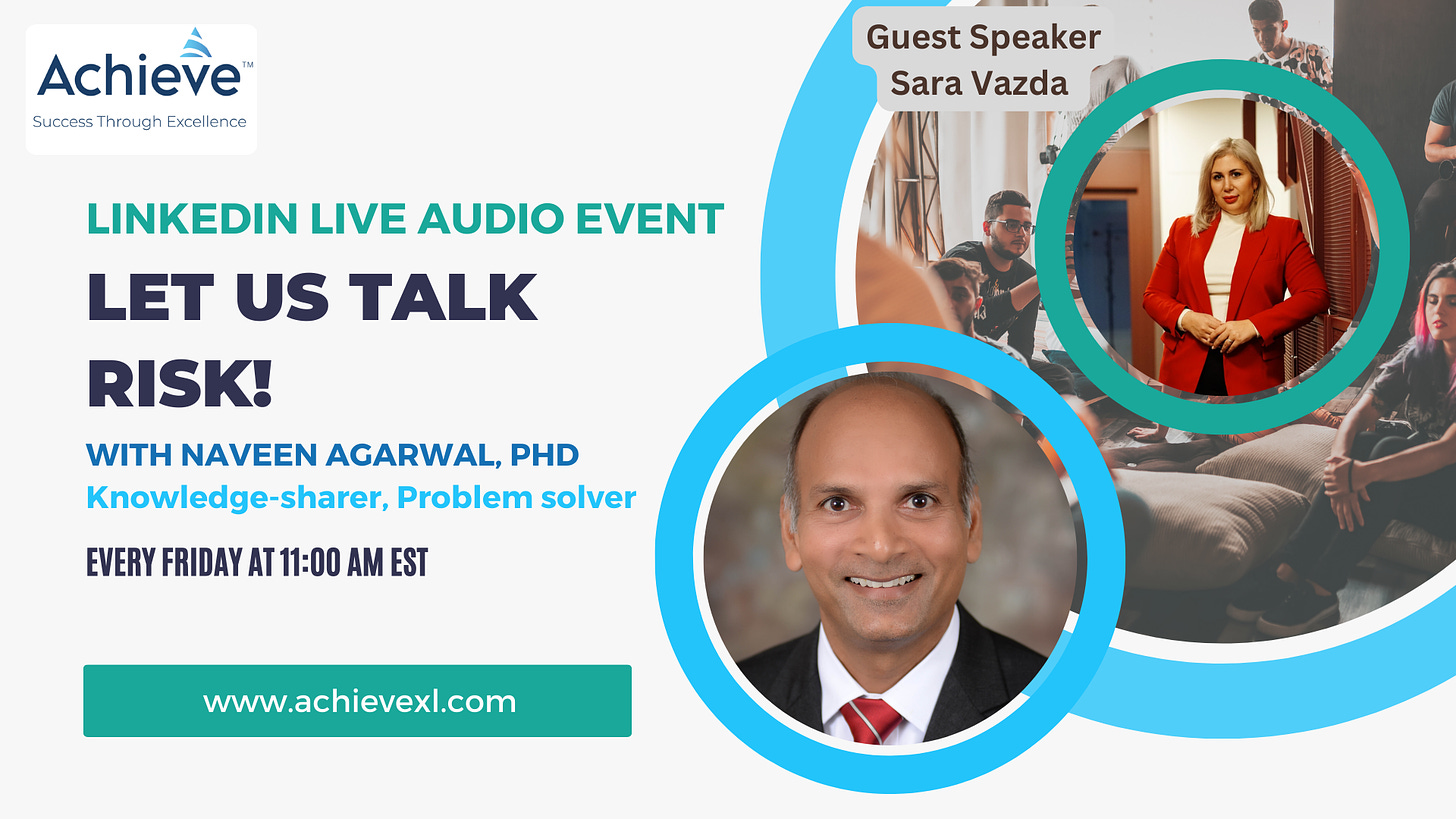Seek clinical input early in development to achieve market success later
Insights from a Let's Talk Risk! conversation with Sara Vazda
Note: this article highlights key insights gained from a conversation with Sara Vazda as part of the Let’s Talk Risk! with Dr. Naveen Agarwal series on LinkedIn. Listen to the full recording of the discussion below.
Why do many medical devices fail to reach their adoption goal after launch? Or, hit roadblocks during the regulatory review process before launch?
In this Let’s Talk Risk! conversation, Sara shares that one reason why medical device manufacturers struggle to achieve their business goals is that clinical input is generally not a natural part of the design and development (D&D) process. Medical device D&D is generally driven by Engineering, with clinical aspects considered only during the final phase prior to seeking regulatory approval.
This is a missed opportunity.
If you fail to adequately address the needs of patients and users in the specific clinical environment, where your device is intended for use, then you are going to design a product with missing requirements and unpleasant surprises during design validation.
Sometimes missing critical requirements can also hinder early adoption by clinical staff. It depends on the intended use and target population, including the users such as clinicians and other staff involved in the process.
On the other hand, when you seek clinical input early in the D&D process, you reap the benefits of an optimal design, adequate risk mitigation, and speed to market. In addition, there are fewer problems in the post-market phase, leading to significant cost avoidance throughout the product lifecycle.
Cool ideas win awards. (Clinically) needed ideas win the market!
We may be fascinated by the latest technology, but we need to also look at the clinical setting to understand how our device will be used and how it might fail to meet the expectations of users and patients from a usability point of view. Understanding how our device will be used in a clinical setting helps us develop a more complete list of requirements for safety and performance.
Note that clinical input does not necessarily mean a clinical trial. There may already be a lot of clinical knowledge in your organization based on prior experience with similar devices. A best practice is to create an inclusive culture of collaboration and open communication to capture existing know-how and to identify gaps. Include subject matter experts (SMEs) from different functions as you gather design requirements. You can also learn a lot by talking to key opinion leaders (KOLs) outside your organization who may have more direct experience with similar devices or the target health issue you are trying to solve.
Bottom line - missing clinical input early in the D&D process results in missing key user needs. Often, it later comes back to haunt us in terms of added time and cost of development, and missing launch timeline. We also encounter many more problems in the post-market phase, some due to reasonably foreseeable misuse that should have been considered during risk analysis. When problems are discovered during the post-market phase, we have to pull valuable resources from new product development to fix them. As a result, we also slow down our innovation pipeline.
Listen to the recording of our conversation above for additional perspective on:
Barriers that prevent us from including clinical input early in the D&D process.
How including early clinical input also encourages a strong focus on patient safety throughout the D&D process.
Why it is important to improve collaboration between engineers, product managers and clinical experts.
Understanding that medical device D&D is an iterative process. It helps to focus on both the what and the how throughout the process.
Why it is important to include a representative patient/user population during design validation.
About Sara Vazda
Sara Vazda is an accomplished expert in the medical device industry, with a focus on guiding startups in medical device development and regulatory adherence. Her unwavering commitment to advancing women's health is exemplified through her strategic partnerships with Femtech companies like Ella and Hormona. As a registered biomedical scientist and specialist in laboratory medicine, Sara has accumulated a wealth of experience in various clinical positions, in both private and public hospitals as well as the medical device industry. This extensive background has cultivated a deep understanding of how clinical considerations can significantly influence the adoption of medical devices by both users and patients, resulting in a comprehensive perspective on how design gaps impact user and patient acceptance.
About Let’s Talk Risk! with Dr. Naveen Agarwal
Let’s Talk Risk! with Dr. Naveen Agarwal is a weekly live audio event on LinkedIn, where we talk about risk management related topics in a casual, informal way. Join us at 11:00 am EST every Friday on LinkedIn.
Disclaimer
Information and insights presented in this article are for educational purposes only. Views expressed by all speakers are their own and do not reflect those of their respective organizations.




